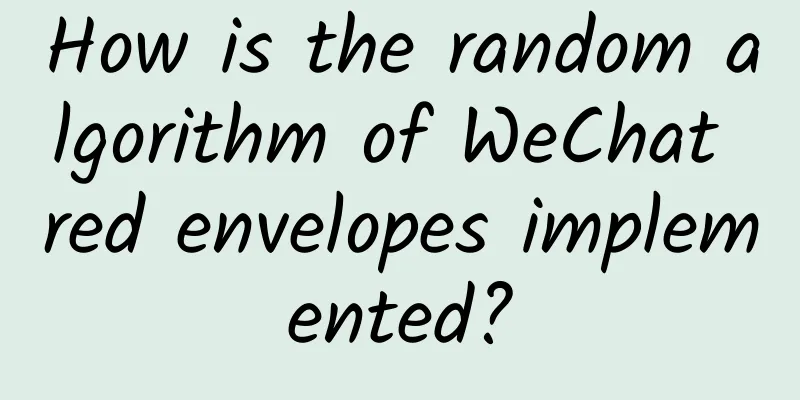How is the random algorithm of WeChat red envelopes implemented?

|
I saw a question on Zhihu: How is the random algorithm for WeChat red envelopes implemented?
Some people say that Tencent achieved this roughly like this:
Some people have also done normal distribution, variance analysis, regression analysis, statistical simulation, etc., but I won’t post it because the picture is too long. However
Let’s change our thinking. Now we change all the money into 1-cent coins, imagine the red envelope as a jar, and then scatter the coins.
Red envelopes are randomly selected for every penny. As for regression analysis and statistical simulation, they are of no use at all. In this example, we abandon traditional concepts such as "drawing" and "random amount", so that money has a sense of choice and performs "random" behavior. Naturally, the red envelope has the attribute of random amount. Change your thinking and don't complicate simple problems. When we design code, we usually consider the logic in real life and abstract objects into classes and behaviors into methods. However, we also need to consider the reversal of thinking occasionally. Of course, my code has certain drawbacks. Thinking is the most important thing. |
<<: Xiaomi Mi A1 releases kernel source code: turns into the little prince of flashing
Recommend
Privacy film can hurt your eyes and even cause blindness? Do you still dare to use it?
Is privacy film really useful? "Can students...
5 Top Traffic Video Marketing and YouTube Video Production Tutorials
For many foreign trade people, video marketing is...
Optimization Case | Creative material optimization techniques in the education industry!
This article shares with you practical and replic...
Community operation: 2 steps to make a good community operation plan!
Nowadays, everyone is talking about community ope...
A woman sneezed and her brain suddenly "leaked". This type of person is very likely to suffer from this disease!
Many people have experienced choking and sneezing...
A Brief Analysis of High-Performance IO Model
A Brief Analysis of High-Performance IO Model Ser...
How does the brain recognize people by their voice?
Review expert: Yuan Xiandao, deputy chief physici...
The food you think is "dirty" is actually rich in nutrients
Duck blood is a very common food ingredient, smoo...
Fupange Convertible Bonds Convertible Bonds Speculation Chapter Emotional Cycle 23 Documents
Fupange Convertible Bonds Convertible Bonds Specu...
Unveiling the magic of Amazon: What did Bezos do behind the miracle of low profits and high valuations?
Lishi Introduction: Since its listing in 1997, Am...
How to enable overseas live streaming function on TikTok? How to start overseas live streaming on TikTok
This article mainly introduces how to enable the ...
Reno: OPPO's new breakthrough, the side-rotating camera is just the beginning of surprises
As an electronic consumer brand dedicated to maki...
The first choice of Feng Shui spiritual objects for entrance examinations
June is approaching and the feeling of summer hea...
"Don't open" - the gift left by the inventor of the black box to mankind
Tribute to David Warren, the inventor of the &quo...
Jietuo D2308U Mini PC Review
Giada D2308U is an upgraded version of D2308. Alth...









